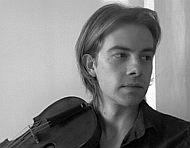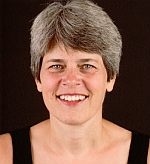
Among the recitals were two “dialogue” cantatas featuring soprano Kendra Colton and bass Sumner Thompson, with a small complement of instruments. Heard at Carmel’s All Saints Church last Tuesday, these works portray the magnetic attraction of the soul (soprano) and Jesus (bass). In some of these works by Bach, duets take on a romantic sensuality that could make a nun blush. Not so, however, in Liebster Jesu, mein Verlangen (BWV 32) and Selig ist der Mann (BWV 57), wherein the duets occur in narrative recitatives, and in just one “duett-aria.”
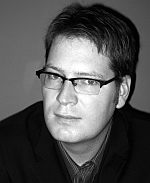
The soprano aria that opens the first of these gets a generous oboe obbligato to set the tone for the opening text, “Dearest Jesus, my desire.” As if to complement the oboe, the word erfreue (bringing joy) gets its expressivity underlined by a coloratura melisma. In the next aria, for bass, the accompaniment included an obbligato violin solo. In this cantata, the recitatives were accompanied; in the second work, Selig ist der Mann, they were “dry,” using only portative organ and cello. The point here is that despite having created two works of similar character, Bach exploits every possible combination to ensure variety. The “duett-aria” actually alternates between the two voices in call-response fashion, and, with oboe, all tripping to a jolly pulse. A brief chorale, adding mezzo-soprano and tenor, closes out the work, the soprano carrying the chorale tune.
Another example of Bach’s instinct for variety is his use of both da capo (ABA form) and two-part arias. The bass aria that opens Selig ist der Mann (Blessed is the man) is of the latter type, while the soprano’s Ich wünschte mir den Tod (I would wish death upon myself) the former. For the bouncing final soprano aria, Ich ende behende mein irdisches Leben (I eagerly end my earthly life), the accompaniment was reduced to portative organ and cello, but with a swaggering solo violin, which also figured prominently in the final chorale.
Yet the real highlight of the piece, and indeed of the entire program, was the coloratura bass aria, Ja, ja, ich kann die Feinde schlagen (Yes, yes I can strike the enemy), a joyous and skipping piece that was fully and excitingly exploited by Thompson, who conveyed the words with such dramatic flair and vivacious technical pizzazz as to fix the moment in lasting memory.
For the program, Patricia Thompson and Alan Bennett joined the vocalists in the chorales, the oboist was Roger Cole, and Evan Few played solo violin.
Iffy 'Seasons'
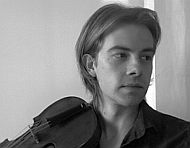
This program was under the direction of the festival’s primary keyboardist — both harpsichord and organ — Andrew Arthur, who chose to sandwich J.S. Bach’s Harpsichord Concerto in D (BWV 1054) between “Spring” and “Summer,” and Harpsichord Concerto in D Minor (BWV 1052) between “Autumn” and “Winter.”
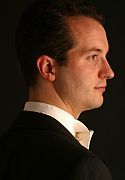
At best, harpsichord concertos make a tiny sound in the relatively cavernous (700 seats) Sunset Auditorium. Listeners must train their ears toward the stage and hope the strings — all six of them in the two Bach works — don’t accidentally blot out the delicate keyboard sound altogether. Alas, that sometimes did happen. Moreover, toning down the violins also made some of the delicious string effects in the great D-minor concerto disappear. To get a sense of the inherent difficulty in the room, the same thing happened several years ago with a performance of the Concerto for Four Harpsichords, BWV 1065 (arranged from Vivaldi’s celebrated Concerto for Four Violins in B Minor), again with only six strings.
Just last summer, Arthur got better results by turning the harpsichord 90 degrees and using the raised lid to project, in Bach’s “Brandenburg” No. 5. With the more robust sound of the violins, the full ensemble swelled to 10 players for the Vivaldi. Even with the LARES electronic sound enhancement switched on, the solo harpsichord and Sunset Auditorium apparently will never be a match made in musical heaven.
Among the lessons of this Carmel Bach Festival must be included the downside of putting the spotlight on players (as well as singers) of obviously different capabilities performing next to each other on the same program.

